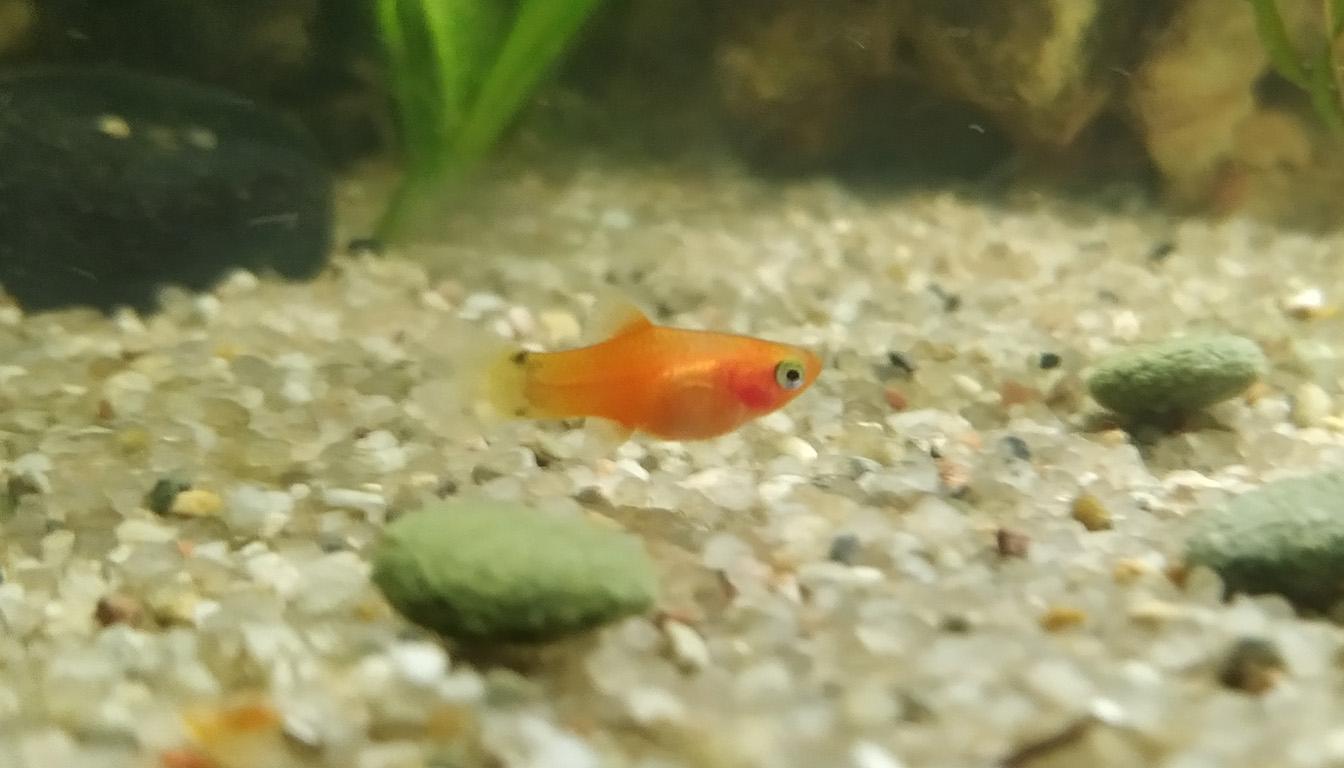Platy fish are a charming and popular choice for freshwater aquarium enthusiasts like you. Known for their vivid coloration and peaceful nature, these fish can add a splash of vibrancy to your tank. They have a reputation for being hardy and adaptable, making them suitable for beginners looking to start their first aquarium or seasoned aquarists seeking a low-maintenance companion.
There are numerous types of platy fish, each with unique patterns, colors, and fin shapes to admire. From the iridescent shimmer of neon blue platies to the playful spots of mickey mouse platies, selecting the variety that best suits your taste can be an enjoyable process. Their adaptability to community tank life means they can often be paired with other non-aggressive fish, creating a harmonious and visually appealing underwater ecosystem in your home.
In this section, you’ll discover various aspects of Platies that are crucial for providing them with a proper environment. Let’s explore the necessities to ensure they lead a happy, healthy life in your aquarium.
| Common name: | Platies are often referred to by their common names, which include Platy Fish and Moonfish. |
| Scientific name: | The scientific name for the Platy Fish encompasses species within the genus Xiphophorus, primarily Xiphophorus maculatus and Xiphophorus variatus. They belong to the Poeciliidae family . |
| Care Difficulty: | Platies are recognized for their easy care level, making them suitable for beginner aquarium enthusiasts. |
| Adult Size: | An adult Platy can reach an average size of 1.5 to 2.5 inches (4 – 6 cm). |
| Original Origin: | Your Platy’s lineage can be traced back to Central America, focusing on areas like Mexico and Guatemala. |
| Tank Size/Setup: | To ensure your Platies have enough room, a minimum 10-gallon tank is suggested. They thrive in a planted aquarium with ample swimming space. |
| Temperament / Compatibility: | Platies are peaceful freshwater fish that do well with other non-aggressive fish like tetras, guppies, and swordtails. |
| Water Temperature: | Maintain your tank’s water temperature between 70°F to 80°F (21°C to 27°C) for optimal Platy health. |
| Water Hardness: | The ideal water hardness for Platies is 10 to 28 dGH. |
| Water pH: | The recommended pH range for your Platy Fish is 7.0 to 8.0, ensuring their comfort and health. |
| Fish Food: | Platies are omnivores. They benefit from a varied diet of flake foods, freeze-dried bloodworms, and vegetable supplements. |
| The Sexes: | Recognize males by their modified anal fin, termed a gonopodium, while females tend to be larger with more rounded bodies. |
| Breeding : | Platy fish reproduce frequently, so maintaining a higher female-to-male ratio (2:1) can help reduce stress among them. |
| Average Lifespan: | With proper care, Platies have an average lifespan of 3 to 5 years. |
Conclusion
Your journey with platy fish can be a vibrant and joyful addition to your home aquarium. These fish are renowned for their vivid colors and social behavior, making them perfect for both novice and experienced aquarists.
- Easy to Care For: You’ll find platy fish quite hardy, adaptable to various water conditions, and simple to care for.
- Tank Conditions: A balanced diet, appropriate tank size, and stable water conditions are key to their wellbeing.
- Social Aspects: With a preference for company, maintain a proper ratio of two females per male to prevent stress.
By providing consistent care, your platy fish can thrive for up to 2 to 3 years. Their interesting behavior and ease of breeding offer a rewarding experience where you can learn more about the subtleties of fish care.
Remember:
- Maintain a clean tank and monitor water parameters.
- Ensure a varied diet to keep your platies healthy.
- Consider tank mates carefully to maintain a peaceful environment.
In caring for platy fish, you enrich your life with their enchanting presence and contribute to a harmonious aquatic community in your aquarium. Enjoy the captivating world of platy fish.




Leave a Reply